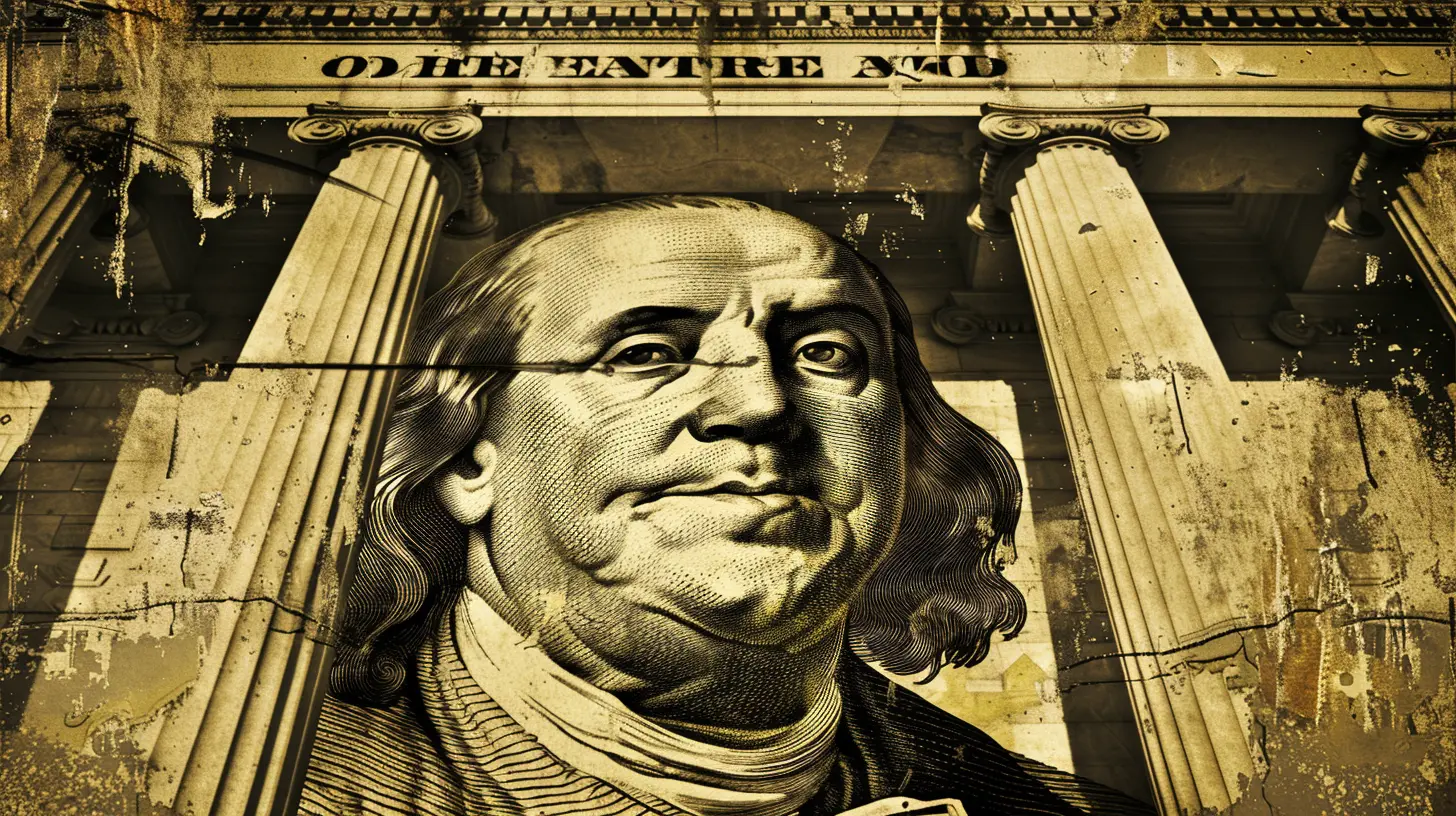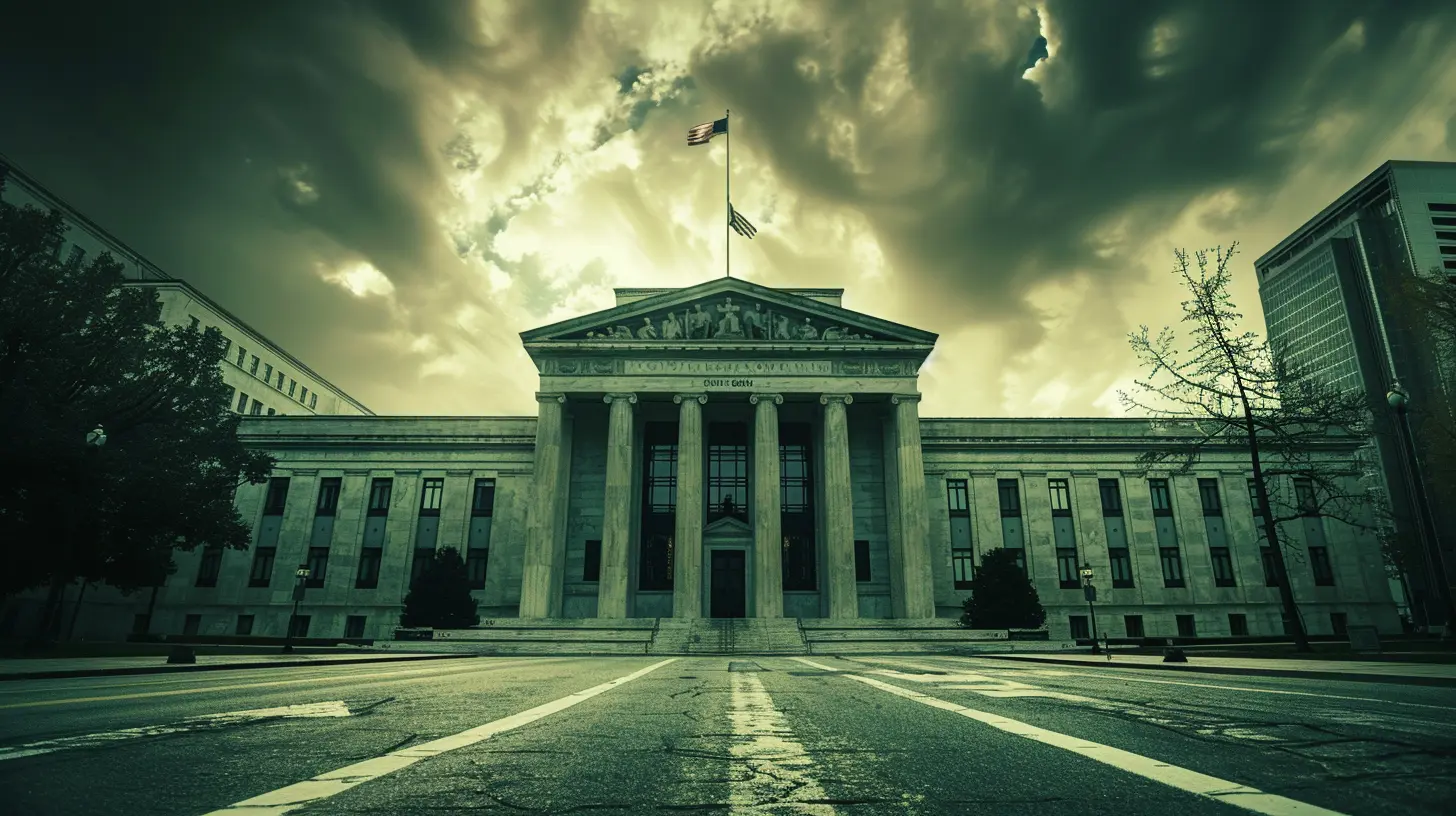Central Bank Policies: Can They Really Prevent Deflation?
13 August 2025
Deflation can be a scary word for economists and regular folks alike. When prices start falling across the board, businesses make less money, people lose jobs, and the economy can spiral into a dangerous cycle of decline. So, can central banks really step in and put an end to deflation before it wreaks havoc?
This is a pressing question in today's financial world, where economic uncertainties seem to be around every corner. Let’s take a deep dive into how central banks tackle deflation, how effective their strategies are, and whether they can truly prevent it from taking hold. 
Understanding Deflation: What’s the Big Deal?
Before jumping into central bank policies, let's break down what deflation actually is.What is Deflation?
Deflation happens when the general price level of goods and services falls over time. At first glance, this might sound great—who wouldn’t want lower prices? But when deflation sets in, it usually signals deeper economic problems.Businesses start earning less, which leads to lower wages and layoffs. People then spend even less, worsening the economic downturn. It’s a vicious cycle that can be extremely difficult to break.
What Causes Deflation?
Several factors can trigger deflation:- Reduced Consumer Spending – When people hold back on purchases, demand drops, causing prices to fall.
- Overproduction – If companies produce more than people are willing to buy, they’re forced to lower prices.
- Tighter Credit Conditions – When banks aren’t lending easily, businesses and consumers cut back on spending, leading to deflation.
- Falling Asset Prices – If stock markets or real estate values collapse, consumer confidence takes a hit, dragging down prices.
Now that we’ve got the basics down, let's see how central banks try to fight off deflation. 
How Do Central Banks Fight Deflation?
Central banks, like the Federal Reserve in the U.S. or the European Central Bank, play a crucial role in shaping a country’s economy. Their main job is to control inflation and ensure economic stability.But when prices are falling, their focus shifts to stopping deflation before it does serious damage. Here’s how they do it.
1. Lowering Interest Rates
One of the first weapons in a central bank’s arsenal is reducing interest rates. The idea is simple: lower rates make borrowing cheaper, encouraging businesses and consumers to take out loans and spend more.- Businesses invest in expansion, hiring more workers.
- Consumers borrow for homes, cars, and education, boosting economic activity.
But there’s a catch—if interest rates are already low (or even at zero), lowering them further doesn’t always have the desired effect.
2. Quantitative Easing (QE)
When interest rate cuts don't do the trick, central banks turn to quantitative easing (QE). This is basically when the central bank buys financial assets like government bonds to inject money directly into the economy.By doing this, they aim to:
- Increase liquidity, making it easier for businesses to get loans.
- Push down long-term interest rates, encouraging investments.
- Boost stock markets, making people feel wealthier and more likely to spend.
3. Forward Guidance
Ever noticed how the stock market reacts drastically to a simple speech from a central bank official? That’s because of forward guidance—a tool where the central bank communicates its future plans to influence economic behavior.If central banks assure people that interest rates will remain low for the foreseeable future, businesses and consumers feel more confident about borrowing and spending, which helps counter deflation.
4. Negative Interest Rates
Though it sounds bizarre, some central banks have even experimented with negative interest rates—meaning banks are charged for keeping excess reserves rather than lending them out.The goal? To force banks to pump more money into the economy instead of hoarding it. However, this strategy comes with risks, such as hurting bank profitability and discouraging saving altogether.
5. Government and Central Bank Coordination
Sometimes, central banks team up with governments to combat deflation. This can involve fiscal policies, like direct cash transfers, increased public spending, or tax cuts to encourage consumer spending.While central banks handle monetary policies, government interventions can add an extra layer of economic stimulation. 
Do These Policies Really Work?
Now comes the big question—do these measures actually prevent deflation? Well, the results are mixed.When These Policies Work
- During Short-Term Deflationary Pressures – If deflation is due to temporary factors (like a sudden dip in oil prices), central bank actions can help stabilize things quickly.- When Combined with Fiscal Interventions – If governments step in with spending programs while central banks ease credit conditions, the combined effort can revive economic activity faster.
When These Policies Fail
- When Consumer Confidence is Too Low – If people remain pessimistic about the economy, no amount of cheap credit will convince them to borrow and spend.- Liquidity Traps – When interest rates are near zero, lowering them further doesn’t always lead to more borrowing. Japan experienced this issue for decades despite aggressive central bank interventions.
- Long-Term Structural Problems – If an economy has deep-rooted structural issues, like an aging population or excessive debt, central bank policies may provide only temporary relief.

Notable Examples from History
The Great Depression (1930s)
The U.S. faced severe deflation during the Great Depression. The Federal Reserve's slow response made things worse, as credit dried up and people lost confidence in the banking system. It wasn’t until the government stepped in with massive fiscal programs that the economy rebounded.Japan’s "Lost Decades" (1990s - Present)
Japan has battled deflation for decades. Despite aggressive central bank tactics, including near-zero interest rates and massive QE programs, deflation has persisted due to low consumer demand and demographic challenges.The 2008 Financial Crisis
During the 2008 crash, central banks worldwide slashed interest rates and rolled out QE programs. While these measures prevented a deeper depression, recovery was still slow, proving that monetary policy alone isn’t always enough.The Bottom Line: Can Central Banks Truly Prevent Deflation?
The honest answer? It depends.Central banks have powerful tools to fight deflation, but their effectiveness isn’t guaranteed. In cases where deflationary pressures are temporary, their policies can work wonders. But when an economy faces deeper issues—like Japan’s prolonged stagnation—central bank policies can only go so far.
For the most effective approach, central banks often need support from governments to implement stronger fiscal policies, ensuring that people not only have access to money but also the confidence to spend and invest in the economy.
So, while central banks play a huge role in preventing deflation, they can’t do it alone. It’s a team effort that requires coordination, strategy, and sometimes a bit of luck.
Final Thoughts
Deflation might not grab headlines like inflation does, but it’s an equally serious economic issue. Central banks have an arsenal of tools to tackle it, but their success depends on a mix of consumer confidence, government cooperation, and the right economic conditions.If history has taught us anything, it’s that deflation is a tricky beast. While central banks can prevent or slow it down, truly eradicating it requires a combined effort from all corners of the economy.
So, the next time you hear about interest rate cuts or QE, you’ll know exactly why they matter—and how they could be shaping the financial future.
all images in this post were generated using AI tools
Category:
Deflation ConcernsAuthor:

Alana Kane
Discussion
rate this article
1 comments
Calder McCray
Central banks can influence markets, but real change requires structural economic reforms.
September 6, 2025 at 11:15 AM

Alana Kane
I completely agree. While central banks play a crucial role, sustainable economic change hinges on implementing structural reforms to address underlying issues.


